Audio equipment is often relegated to the realm of machinery that performs its function and fades conveniently into the background. But Gideon Schwartz sets the record straight in his new in-depth history, “Hi-Fi: The History of High-End Audio Design.” Schwartz reveals the world of the passionate, obsessive audiophile—a world where stereophonics and style come together in state-of-the-art industrial design to make for sublime listening experiences.
Here are a few of the moments through the decades that have defined our listening taste.
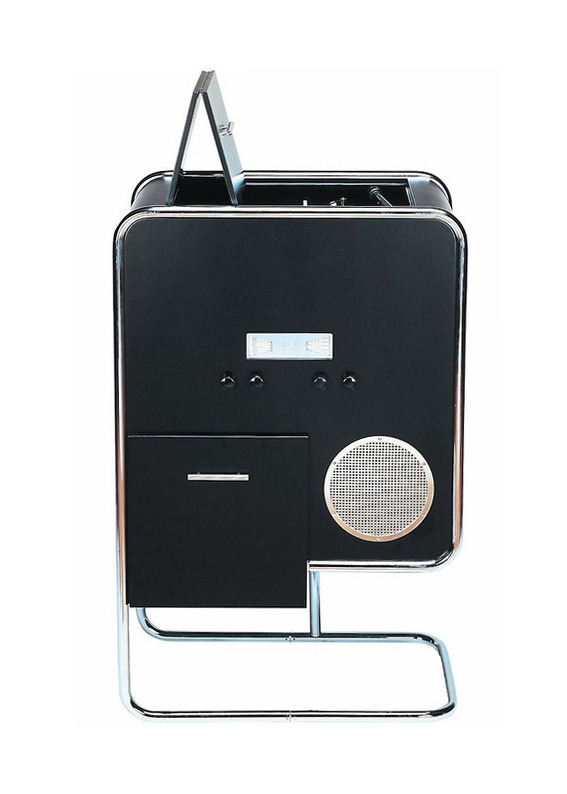
Hyperbo 5 RG Steel Radiogram, Peter Bang, 1934. Picture credit: Design is Fine
1934: The Hyberbo 5RG Radiogram
In the 1920s, Danish engineers Peter Bang and Svend Olufsen were radio pioneers. Over the next century, their company B&O went on to become a luxury electronics company with a reputation for designing remarkable products. While the technology they employed in this early 1934 radiogram (a radio with an integrated gramophone) has long been surpassed, it’s notable for the way in which it emphasized design.
It was a bit more austere than some of the brand’s more popular models, but in retrospect, it’s easy to appreciate its elegant, geometric shape. Note how the top opens like an accordion, how the circular loudspeaker pops against the simple rectangular interface, all on a delicate wire stand.
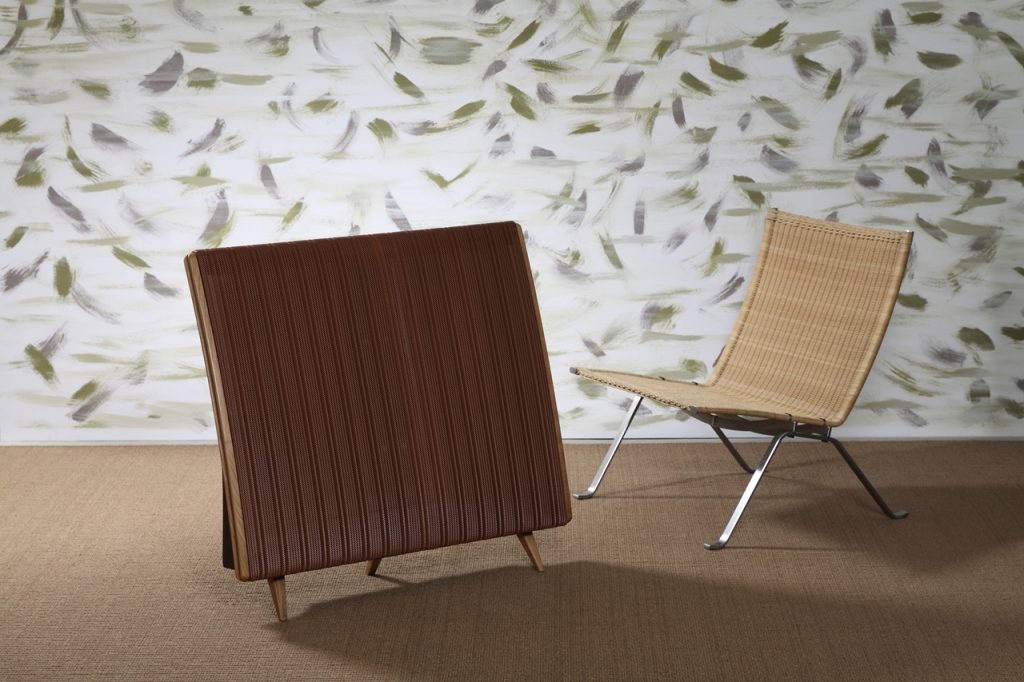
This version of the Quad ESL 57 is still sold today. Photo credit: Quad
1957: The Quad ESL Loudspeaker
Quad’s first full-range electrostatic speaker hit the market just as high-fidelity audio was becoming a household word, thanks in part to publication High Fidelity, which coined the term “audiophile” around the same time. Consumers began to desire more than simply “faithful reproductions” from their recordings—they wanted engineered artistry.
On this front, the British Quad ESL delivered, quickly becoming favored by professional studios and radio stations, including the BBC. The slight curve in its long, mid-century profile, with its perforated metal covering—the earliest models had one of a kind of golden bronze, to blend into the teak frame—made it an unsurpassed standard that remained popular for decades.
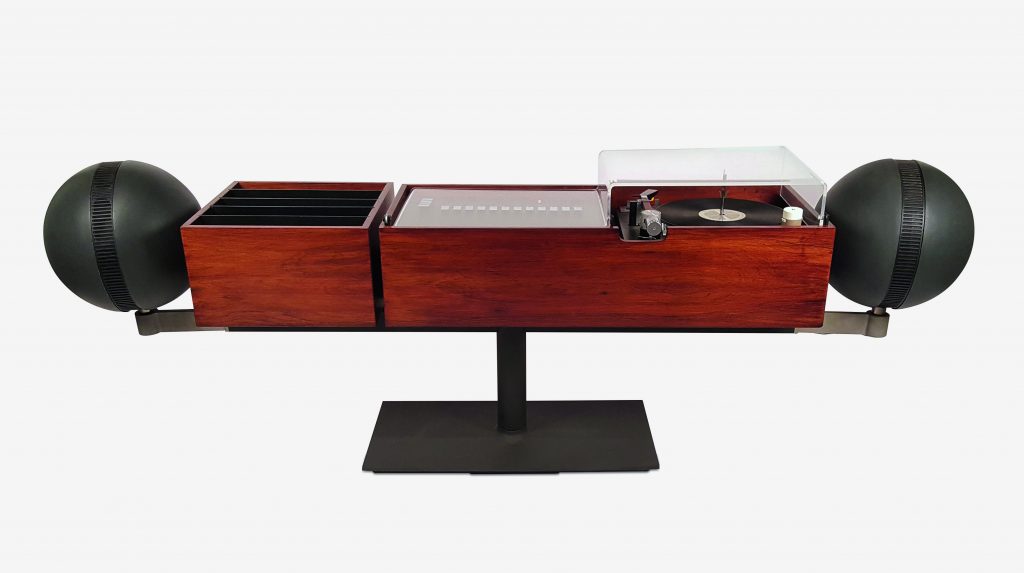
Project G2 Stereo, Hugh Spencer, Clairtone, 1966. Picture credit: 1stdibs / Phaidon
1966: Clairtone G2 Stereo
You might recognize this piece from the silver screen—the Project G was so chic, it found its way into scenes in The Graduate, Good Times, and Marriage on the Rocks. No ‘60s bachelor pad was complete without a stereo console—chairs, coffee tables, and any number of modular cabinets were outfitted with a sound system. But what set this Canadian company’s sideboard apart was that it was actually good.
Clairtone was founded by an electrical engineer and an importer of contemporary Scandinavian furniture, who sought to make products that gave equal weight to both sound and style. With its spherical speakers perched on either side of an elegant rosewood cabinet, no wonder it caught the eye of high-profile owners like Frank Sinatra and Hugh Hefner, who put one in the Playboy mansion.
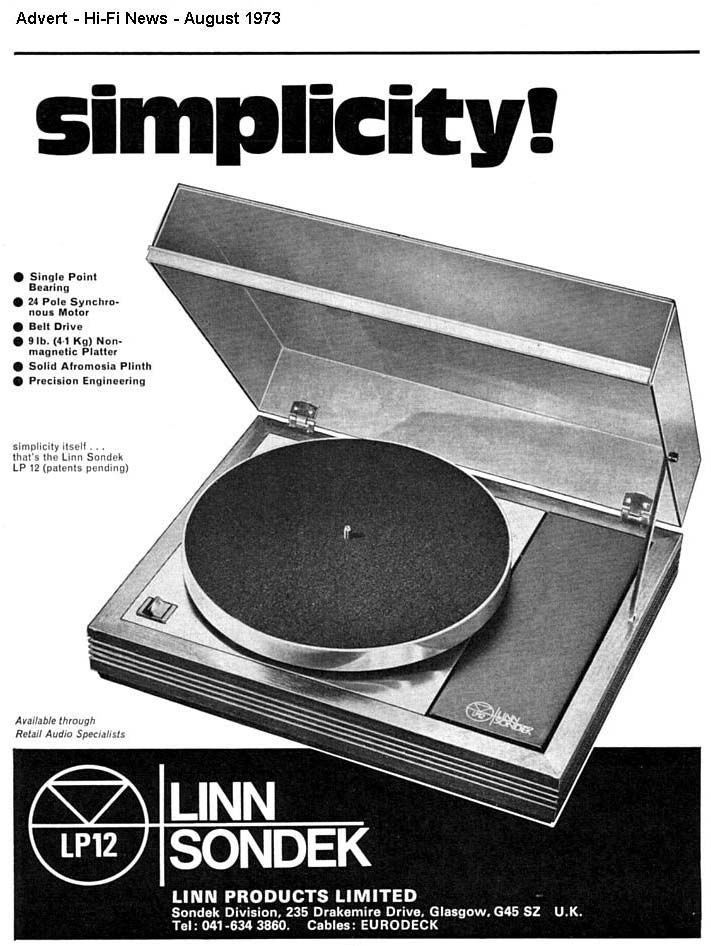
Linn Sondek LP12 advertisement, 1973. Photo credit: Linn
1973: Linn Sondek LP12 Turntable
Until the ’70s, many assumed that the most important part of a stereo setup was the loudspeaker. But that all began to change when Scottish engineer Ivor Tiefenbrun argued that the make-or-break moment for high-end audio happened much earlier. His motto was “garbage-in, garbage-out.”
Early in his career, while he was tinkering with his stereo system at home, Tiefenbrun realized that the sound was much better with his turntable in another room. From there, he decided to design a turntable that was resistant to acoustic feedback. Thus, the suspended turntable—designed to remove as much vibration as possible—was born. In the decades since, Linn turntables haven’t changed much in terms of their design. They still sport a simple metal table atop a rectangular wooden frame—although the unwieldy, boxy acrylic top has been abandoned.
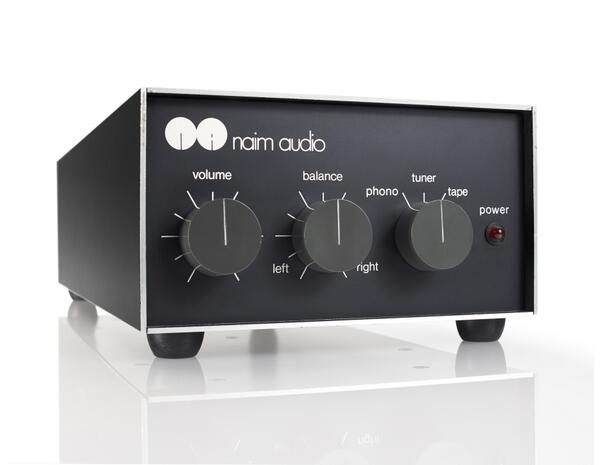
Photo credit: Naim / Twitter
1974: NAIM NAC 12 Preamplifier
Julian Vereker was another British engineer who shared the same view as Tiefenbrun. He sought to design audio equipment that prioritized sound “source-first,” as Tiefenbrun called it. It wasn’t long before NAIM and Linn joined forces on, designing NAIM preamplifiers and amplifiers to be compatible with Linn turntables. Naim was renowned not only for the high quality of the engineering, but also for the simplicity of design. The fewer functions, the better the sound. According to Schwartz, NAIM and Linn’s vigilant approach to clean, simple fidelity got them the derogatory nickname “flat-earthers” from some audiophiles.
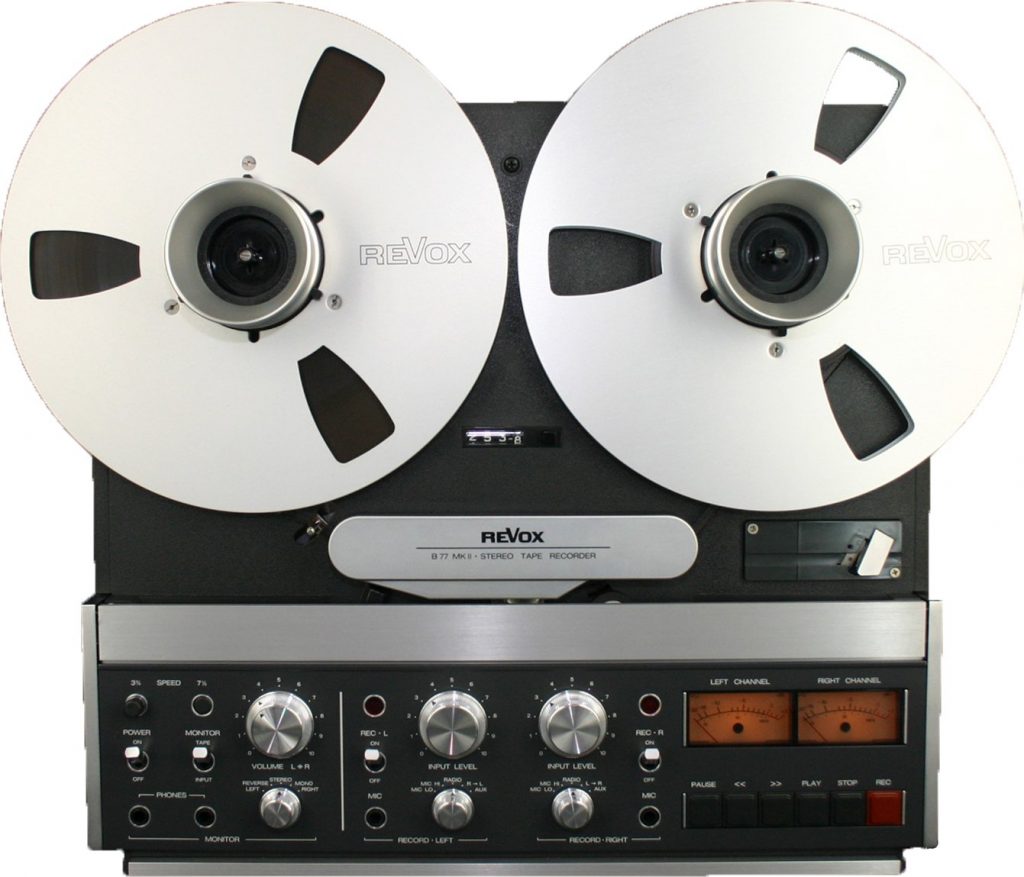
Photo credit: Revox
1977: Studer-Revox B77 Tape Recorder
If Watergate wasn’t enough to remind you, tapes were the technology of the future in the ’70s. The high-end audio market was flooded with reel-to-reel and cassette decks—Nakamichi and Tandberg were two of the leading brands. But by then, the Swiss company Studer had already made a name for itself building professional tape recorders. One of its products was the Studer J37 multitrack recorder, which was used at Abbey Road Studios to record the Beatles’ “Sgt. Pepper’s Lonely Hearts Club Band” in 1967. With this kind of clout, the Revox brand, which targeted amateur hi-fi consumers, made a splash in the domestic market. And the B77 was considered a professional tape recorder, despite its popularity with amateur audiophiles, as well.
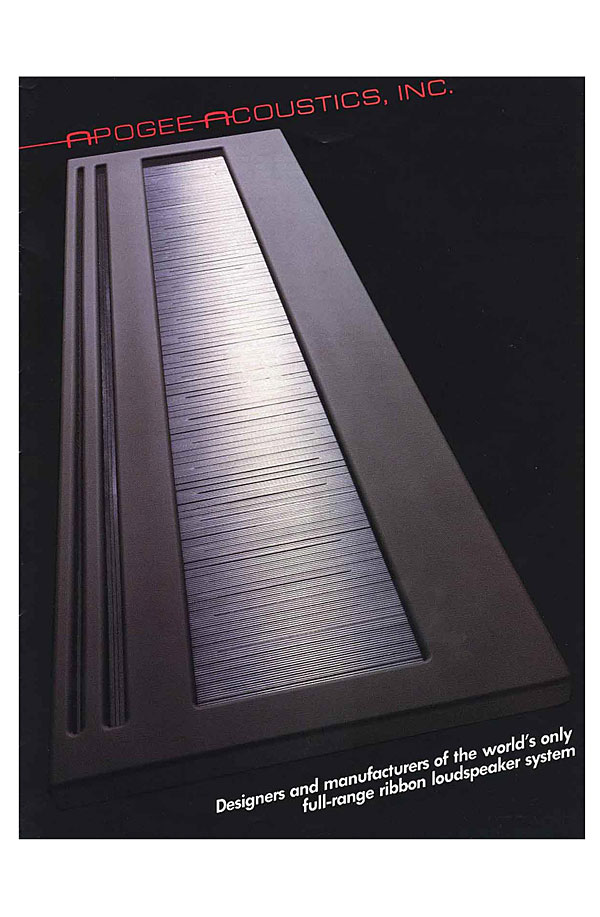
Apogee Acoustics advertisement, 1980s. Photo credit: HiFi Engine
1984: Apogee Acoustics Full Range Loudspeaker
The high-end audio revolution of the ’60s and ’70s could have gone the way of many revolutions of that era and faded away into the darkness. But, as Schwartz explains, the ’80s brought the high-end audio market to a different level, with technological innovations having a particular impact on the loudspeaker.
Founded in 1981 by a fine-art dealer and a former aerospace engineer, the American company Apogee quickly developed a reputation for unusual, state-of-the-art equipment. Their signature loudspeakers—the Full Range, the Diva, the Duetta—all had a quintessential ’80s glossy lacquer, with a thin aluminum ribbon cutting across the center. According to Schwartz, Apogee was the biggest proponent of using ribbons and the occasional hybrid woofer for a sound that provided a unique clarity across the whole range of possible dynamics.
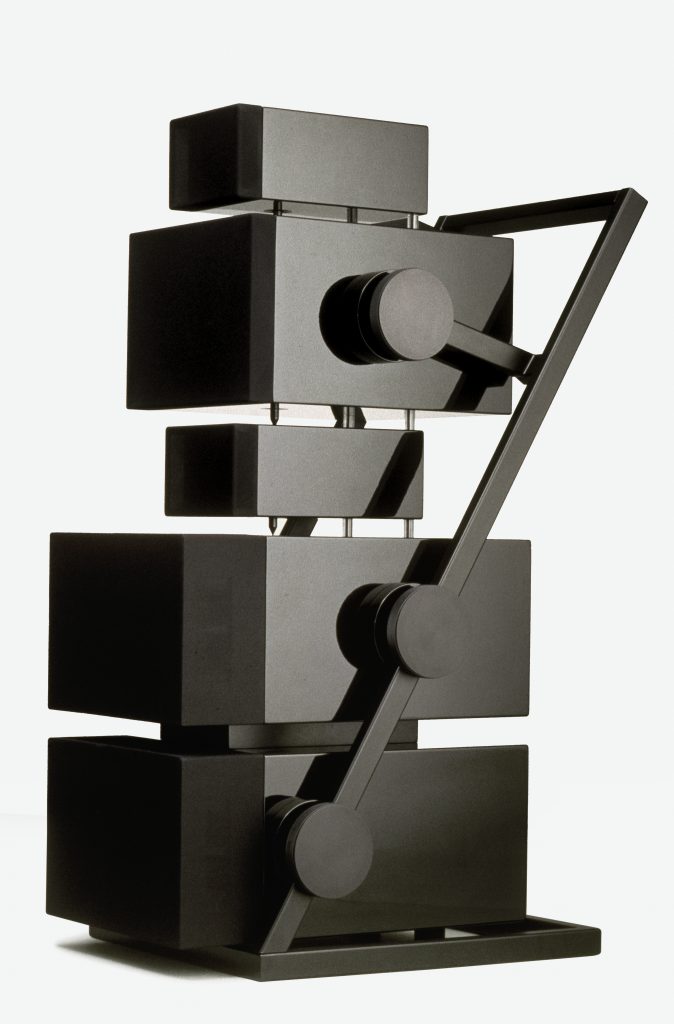
Apologue loudspeakers, Claudio Rotta Loria, Goldmund, 1987. Picture credit: Goldmund / Phaidon
1987: Goldmund Apologue Loudspeaker
It’s no wonder that Goldmund’s adjustable multi-cabinet loudspeaker ended up on display at the MoMA—it was designed in collaboration with the Italian artist Claudio Rotta Loria, after all. What’s happening within each of those speakers is as impressive as the cabinet itself.
Goldmund was a pioneer of the “high bandwidth” school of the high-end audio world—it understood speed and efficiency to be integral to the best audio experiences. Schwartz describes its particular approach to loudspeaker design as “extremist,” in that each of those speakers holds a powerful, efficient dual-magnet driver. These drivers lend to the overall high quality of sound.
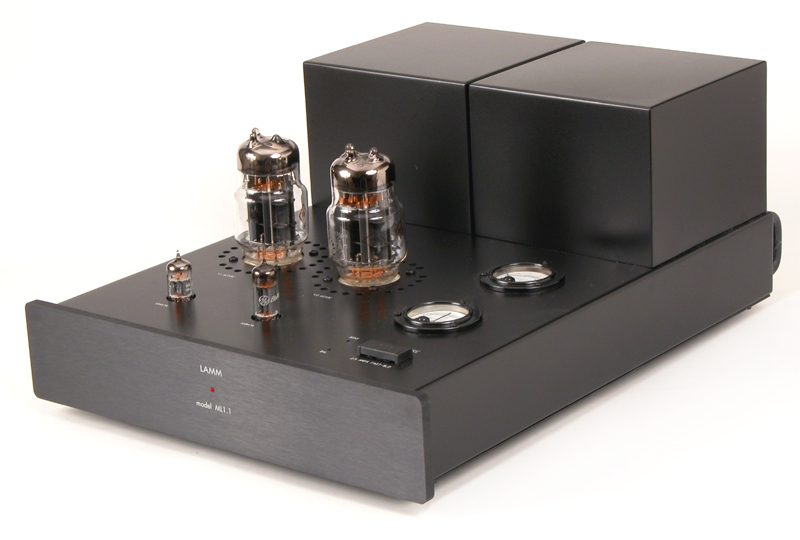
Photo credit: Lamm Industries
1995: Lamm Industries ML1 Amplifier
One trend that miraculously survived the ’90s digital revolution—when CDs brought vinyl and cassettes to near extinction—was the vacuum tube. At first blush, the vacuum-tube amplifier revival seems like an odd outlier in the high-end audio field. These amplifiers were low power and low efficiency—antithetical to all other trends in audio equipment.
But Schwartz argues that the attraction to the vacuum tube went beyond nostalgia. These amps often had an “exceptionally colorful” sound—a welcome reprieve, no doubt, from digital compression. Vladimir Shushurin, a former Soviet engineer, founded Lamm out of his Brooklyn basement in 1993 and went on to design some of the best amps in the world.
According to Schwartz, one reviewer described this amplifier as a “Cold-War-era bomber,”and he wasn’t far off. The vacuum tube Shushurin used, the Russian 6C33C triode, was traditionally found in Soviet military aircraft.
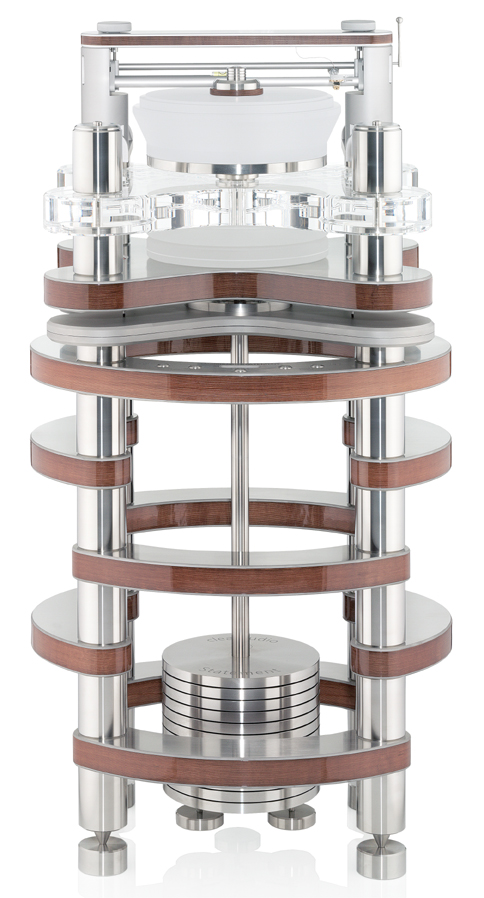
Photo credit: Analog Seduction
2008: Clearaudio Statement V2 Turntable
With the rise of the mp3 came the renaissance of the analog, specifically the LP. Turntables were back in high demand, and high-end audio equipment companies were prepared to meet it. Clearaudio built a reputation for creating sculpted acrylic turntables going as far back as the late ’70s. The Statement V2 turntable rests atop stainless steel legs that are further supported by a series of stainless steel plates, with inlaid wood to absorb any movement that might distort sound. But that’s not all: There’s also a pendulum in the center of the stand to help the table stay maximally level.
These devices are unique because they are linear tracking tables, meaning that the record’s groove is tracked in exactly the same way that the record was cut. Linear tracking is the conceptual ideal—the absolute best way to produce high quality sound. But it’s a very difficult, and costly, to try to pull off for a mass market. That’s what makes Clearaudio so beloved by audiophiles—each table strives for individual excellence.
The Future of Hi-Fi
Schwartz’s history comes at an interesting time: The last decade has seen a mainstream embrace of the lo-fi. No longer is every household outfitted with a stereo system—most of us are content to listen to the top hits as compressed mp3s out of tiny speakers attached to smartphones. But despite all that, the world of high-end audio is ever-expanding.
Brands continuing to innovate—particularly in the embrace of wireless loudspeakers—and high-end consumers have an increasing appetite for vintage appliances. Antique vacuum tubes, vintage turntables—these trends, Schwartz forecasts, aren’t going anywhere.



